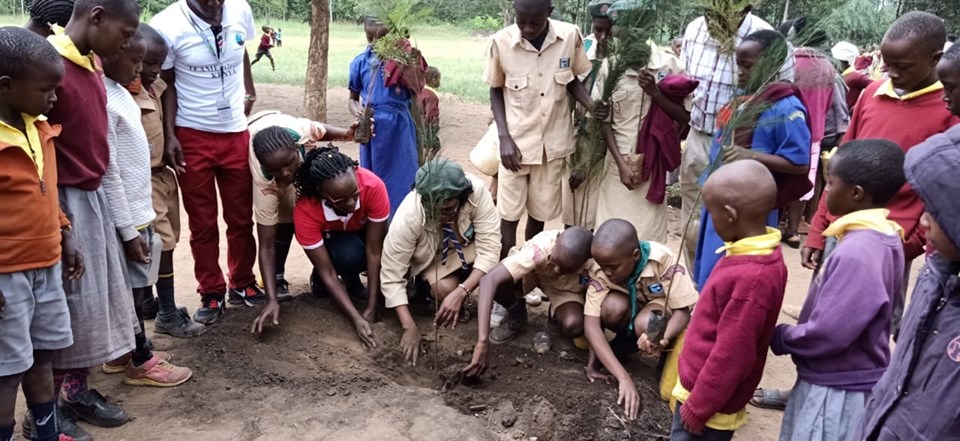Focus on green schools needed to reverse environmental degradation

Health and quality of life are reliant on disease prevention and water are also directly connected with the environment and the ecosystems in which man lives and works.
Climatic disasters are now a major cause of illness and death in humans, but we can predict and deal with the appropriate means. Earth’s climate will continue to change. Hence, adaptation strategies must be considered to reduce disease burdens, injuries, disabilities and deaths (WHO).
The extent to which human health is affected by climate change depends on: (i) the exposures of populations to climate change and its environmental consequences, (ii) the sensitivity of the population to the exposure, and (iii) the ability of affected systems and populations to adapt. There is therefore an urgent need to start taking up the fight against climate change more seriously.
The importance of trees in the fight against climate change cannot be overemphasized. Whether you plant trees around your home and property, in your community, or in our national forests, they help fight climate change. Through the natural process of photosynthesis, trees absorb CO2 and other pollutant particulates, then store the carbon and emit pure oxygen.
In light of the above, the Rotary Club of Murang’a has embarked on a School Greening Initiative through partnerships with various organizations.
Green schools significantly lower greenhouse gas emissions and energy costs, improve student and teacher health, and enhance student motivation. With children spending two-thirds of their waking hours inside schools, benefits like pure air quality, healthy lighting as well as safe outdoor spaces, aren’t fancy extras – they are essential.
The main approach is to form Model schools which meet the minimum requirements for a green school and in this way trigger behavior change as well as promote a positive attitude towards helping take care of our environment. This will be achieved by hands on pupil and teacher involvement in establishing of green clubs, establishment of tree nurseries as well as adopting green approaches within the school operations.
So far the Rotary Club of Murang’a has partnered with the Greening Kenya Initiative Trust, Team Environment Kenya and the Summit Seekers to plant over 1,000 tree seedlings at Ndeera Primary School. The Club is also undertaking mentorship of two schools namely St. Mary’s Primary School and St. Phillip’s Gikindu Primary so that they can become Model Green schools.
Additionally, during our fellowship, we invited a guest speaker who gave us insights on the various opportunities on climate change mitigation strategies as well as opportunities for climate financing from the National Treasury.
By simply planting more trees within the schools and the surrounding communities, as well as promoting positive attitude towards mitigating against climate change, we can slowly solve this big disaster facing our world, one tree at a time.
The club aims to plant more trees and promote positive behavior change through partnerships towards taking care of our immediate environment for better health.



